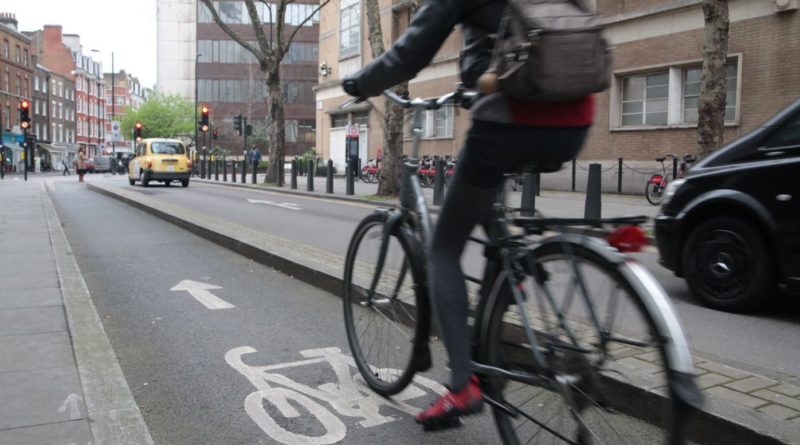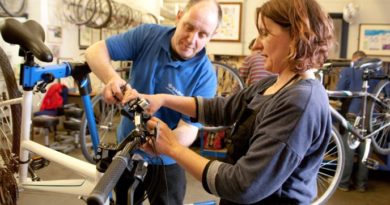Give health experts a say in transport policy, says Sustrans in response to air pollution report
The UK Government should join up cycling and walking policies with clean air plans to solve UK’s pollution crisis, says walking and cycling charity Sustrans.
The “Actively Improving Air Quality” report from a round table Sustrans held with local authorities and Chris Boardman, in his role as Greater Manchester’s Walking and Cycling Commissioner, sets out ten recommendations for UK and local government, and charities working in the field, to help clean up the air.
It follows the joint parliamentary committee inquiry published last week, which calls for the UK Government to take meaningful action on air pollution amid a series of court rulings in recent years.
Experts in the field of air pollution have in the past warned that air pollution levels are “undoubtedly worse than reported in the media.”
The report concludes that cycling and walking programmes have a key role to play in reducing emissions from motor vehicles, which are responsible for the majority of air quality limit breaches in the UK, through a shift away from car journeys.
However, there are many barriers that local authorities currently face that prevent them from effectively implementing such programmes, including lack of political leadership on air quality; timing – the pressure for immediate success; funding; car dominance and lack of community engagement.
Other key report recommendations for the UK Government to overcome these barriers include:
- Lead a national campaign to increase awareness and build momentum from communities to tackle air pollution and give politicians the mandate to act.
- Prioritise direct measures to limit private vehicles as the mode of choice into city centres as a central component of Clean Air Zones, and help local authorities take action to deliver long-term continuous improvement in air quality beyond 2020.
- Provide dedicated, continuous funding for walking and cycling to enable local authorities to prepare active travel programmes that are shovel-ready to tackle air pollution.
Furthermore, local government should place health practitioners in transport and planning teams, to help integrate cycling and walking infrastructure that promotes a healthier lifestyle and better air quality.
Twenty nine local authorities in England that are breaking legal air quality limits are to produce Clean Air Plans by November 2018 with this number set to increase following successful legal action by Client Earth against the Government, whilst the devolved nations are trialling a number of different plans to improve air quality.
The Scottish Government, for instance, is proposing to introduce Low Emission Zones in four cities by 2020 and air quality management areas (AQMAs) by 2023 across the country.
Anita Konrad, England Director for Sustrans said: “We face an air quality crisis. This is an invisible issue that kills tens of thousands of people prematurely every year in the UK; and will be the greatest environmental cause of mortality worldwide by 2050.
“One of the best ways to improve air quality in the UK is to reduce the number of motorised vehicles on the road and offer alternatives to private vehicle travel, such as walking and cycling.
“We’re calling on the UK Government to take joined-up action on linking policy and funding for walking, cycling and reducing air pollution and to help local authorities to encourage more people to travel by bike and on foot for shorter journeys. It is time for the Government to take the lead and work with others to deliver tangible solutions to save lives.”
Neil Tuck, Sustainable City Team Leader at Southampton City Council: “We want to see a long term commitment by Government to delivering ongoing improvements to air quality that go beyond compliance to EU standards by 2020.
“Accessing funding for, and developing, walking and cycling schemes needs to be made as easy as possible, and a priority for Government, if we are to enable healthier lifestyles, improve air quality and see long term transformation in UK cities. Promoting the health benefits associated with active and sustainable travel is essential for creating an environment where people want to live and work.”
In joint research with environmental consultancy Eunomia, released last year, Sustrans found that if government goals for walking and cycling in England and Scotland were reached, this would save the public purse £9.3 billion and reduce over 12,000 premature deaths from air pollution over the next decade. The gains would be even bigger if wider benefits to health and wellbeing from increased physical activity were included.
What pollutants are out there?
Pollution is made of two distinct categories:
- Gases and Vapours
- Particulates
Most types of pollution can be put into one or other category.
- Gases & Vapours:
- Nitrogen Oxides
- Sulphur Dioxide
- Carbon Monoxide
- Low level Ozone
- Hydrocarbon Chemicals
These pollutants all require an activated carbon filter media to absorb them.
- Particulates:
- Asbestos dust from brake linings
- Pollen
- Road dust
- Black smoke from diesel emissions
- Any other material which is solid in nature
There are two categories of particulates: inhalable and respirable
- Inhalable particulates: are the particles big enough to be trapped within the nasal hairs and the mucous membranes at the back of the throat.
- Respirable particulates: are the particles that pass beyond the nasal hairs and the mucous membranes of the throat and pass into the lung sacs and subsequent blood barrier. These particulates can carry carcinogenic chemicals used in petrol (benzene, pyrene, etc) to the blood barrier.
The science of what is and isn’t dangerous
Particulate Matter comes in a wide range of sizes, measured in micrometres or ‘microns’. Like inches, metres and miles, a micron is a unit of measurement for distance, a very small distance. There are 1,000 microns in one millimetre and about the same width of a hair on your head.
Particulates that are 50+ microns in diameter can be seen by the naked eye, but as they get smaller they tend to invisibility. (The Invisible Threat)
Particulates less than 10 microns in diameter (less than PM10) start to pose a health concern because they can be inhaled into the back of the throat region causing irritation and coughing.
Particulates less than 2.5 microns in diameter (less thanPM2.5) which include sub micron particulates (less than PM1) are referred to as fine or ‘respirable’ particulates and are believed to pose the greatest health risk.
Because of their size, the normal human filtering system, the nose and its nasal hair, are unable to trap these fine particulates. They pass through the upper airways and deep into the fine capillaries and air sacs which is where the oxygen exchange occurs to oxygenate the blood.
Current concerns are that very small amounts of toxic or carcinogenic chemicals like the VOC Pyrene, are carried on the particle and taken to the point of exchange, which allows for the potential of the chemical to be absorbed into the blood stream.
A typical sample of black smoke emitted from one of the more popular people carrying vehicles, would include particulates from 100 microns in size to particulates less than one micron in size.



